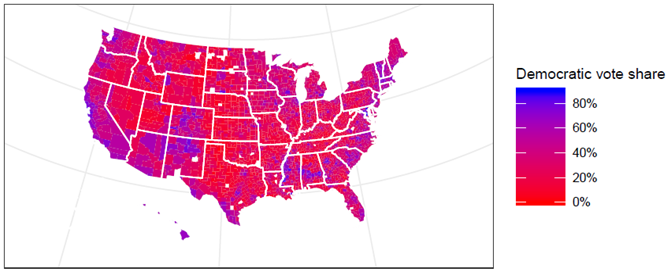Georgios Melios
28 June 2021
Looking back, 2020 was a year of momentous social, political and economic disruptions, ranging from the Australian bushfires to the tensions between the US and Iran and from the outbreak of SARS-CoV-2 to the US presidential elections.
Another remarkable social phenomenon was the series of Black Lives Matter protests that erupted in the spring of 2020. In the wake of George Floyd’s murder on 25 May 2020, millions of Americans took to the streets to demand reforms of the criminal justice system and to bring a halt to police brutality against African Americans. This series of protests was the largest ever recorded in American history and made racial injustice one of the central themes during the 2020 presidential election. Three-fourths of Americans claimed that BLM protests were a major input in their ballot box decision, and a fifth even considered this to be the single most important factor.
The BLM protests raised important questions about the societal impact of social movements and mass mobilisations. Prior research provides inconclusive findings, showing that protests sometimes help and sometimes harm the minority cause. Hence, even though it is clear that BLM protests played an important role in people’s voting decisions, it is unclear whether the movement pushed people toward the Democratic or Republican party. In fact, both parties focused their campaign strategy on the BLM movement, as Democrats promised to address racial injustice, whereas Republicans vowed to re-establish law-and-order.
New research by G. Melios (UCL Institute for Global Prosperity) and B. Klein Teeselink (Yale University) sheds light on the impact of BLM protests on the outcome of the presidential election. Using data from more than 3000 US counties, their research aims to distinguish the causal effect of protesting activity on voting behaviour.
Figures 1 and 2 clearly indicate that protests and voting are correlated, since people predominantly voted Democrat in counties that experienced protests. The researchers show that BLM protests not only correlate with voting patterns, but fact caused an increase in the Democratic vote share. As a result, the George Floyd protests might have tilted the election in favour of the Democrats.


Curiously, protests did not have any effect on the number of people that turned out to vote. Even though voter turnout was historically high across the country, Melios and Klein Teeselink show that the increase in turnout occurred independently of BLM protests. As a consequence, the increased Democratic support seems to have resulted from a progressive shift among undecided voters.
Before concluding that all protests are created equal, however, it is important to know that this research mostly looks at non-violent protests. The researchers therefore admit that people who experienced violent BLM protests in their neighbourhood might have been driven towards the Republican party and Trump’s message of law-and-order. Nevertheless, the observation that BLM protests can bring about a significant shift in voting behaviour is an encouraging message for marginalized groups who consider whether to organize and engage in collective action.
Image credit: Nicole Baster on Unsplash
Fatemeh Sadeghi
30 May 2024 Feminists in the Global South have stepped out of the conventional territories of ‘women’s matters’ into more fund...